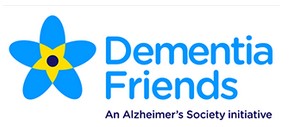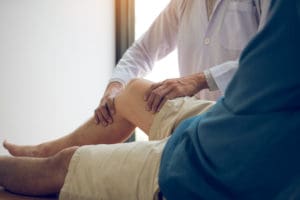Muscular dystrophy is an inherited condition that gradually causes muscle weakness. It is a progressive disease, meaning that it begins by targeting one group of muscles before affecting muscles in the body more widely.
While there is no known cure for muscular dystrophy, with the right treatment and care in place, symptoms can be managed and people who have the condition are able to continue living as independently as possible. So, what is muscular dystrophy? Find out more below.
Types of muscular dystrophy
There are many different types of muscular dystrophy, and symptoms will vary depending on each diagnosis. Not all types of the condition will result in severe disability, and many don’t affect life expectancy. The most common types of muscular dystrophy include:
- Duchenne
- Becker
- Myotonic
- Facioscapulohumeral
- Emery-Dreifuss
- Limb-girdle
- Oculopharyngeal
Duchenne Muscular Dystrophy is the most common form of the disease, with noticeable symptoms appearing between the ages of 1 and 3. Children with Duchenne Muscular Dystrophy tend to have thighs that are bulkier in size than usual, resulting in problems with walking, running and jumping.
Signs and symptoms of muscular dystrophy
The defining symptom of muscular dystrophy is muscle weakness, but more specific signs and symptoms can arise depending on the type of muscular dystrophy that has been diagnosed:
| Type | Symptom |
| Duchenne Muscular Dystrophy | · Difficulty with walking
· Loss of reflexes · Poor posture · Scoliosis (curvature of the spine) · Breathing difficulties · Swallowing problems · Lung and heart weakness |
| Becker Muscular Dystrophy | · Walking on tip-toes
· Frequent falls · Muscle cramps · Trouble getting up from the floor |
| Myotonic Muscular Dystrophy | · Difficulty lifting neck due to weak muscles
· Difficulty swallowing · Poor vision · Weight loss · Increased sweating |
| Facioscapulohumeral Muscular Dystrophy | · Difficulty chewing and swallowing
· Slanted shoulders · Hearing and respiratory problems · A crooked appearance of the mouth |
| Emery-Dreifuss Muscular Dystrophy | · Weakness of the upper arm and lower leg muscles
· Breathing problems · Heart problems · Shortening of the spine, neck, ankle, knee and elbow muscles |
| Limb-girdle Muscular Dystrophy | · Hip and shoulder muscles are weakened
· Difficulty lifting the front part of the foot (causing frequent tripping) · Inability to carry heavy items |
| Oculopharyngeal Muscular Dystrophy | · Drooping of the eyelids
· Trouble swallowing · Changes in voice · Heart problems · Difficulty with walking |
Muscular dystrophy diagnosis
There are many methods for diagnosing muscular dystrophy, and the age at which the condition is diagnosed will depend on when symptoms begin to appear. Muscular dystrophy diagnosis may involve some or all of the following:
- Investigating symptoms – explaining symptoms to your GP; for example, if your child is unable to climb the stairs, play sports or lift objects
- Exploring family history of the disease – discussing family history of muscular dystrophy with your GP can help them to determine which type of the disease should be diagnosed
- A physical examination – including checking vitals such as blood pressure, heart rate and respiration
- Blood tests – a sample of blood may be taken to test for creatine kinase, a protein that is released into the blood when muscles are damaged
- Electrical tests on nerves and muscles – these tests examine electrical activity in nerves and muscles, both at rest and when the muscles are contracting
- A muscle biopsy – a muscle biopsy involves removing a small sample of muscle tissue to be examined under a microscope and tested for proteins. Analysing the protein in muscles can help to determine which gene is causing muscular dystrophy, and which type it is
Muscular dystrophy treatment
While there is currently no cure for muscular dystrophy, there are several treatments that can help to manage the condition. The treatment you need will depend upon the type of muscular dystrophy you have, and healthcare professionals will be able to advise on the best options. Low-impact exercises such as swimming can help with mobility and strength, and physiotherapy services can assist with preserving flexibility and preventing stiff joints.
A common side effect of muscular dystrophy is difficulty with swallowing, especially as the condition progresses. This means there is an increased risk of choking and chest infections. Depending on the severity of these problems, a professional dietician may be able to help you alter the consistency of your food. Alternatively, a speech and language therapist may be able to assist with exercises to improve chewing and swallowing.
Muscular dystrophy care from IPH
If you or your loved one are looking for extra care and support, our specialist team of carers can help. We offer muscular dystrophy care on a live-in care basis, providing tailored support to meet your individual needs. Contact one of our friendly experts today on 0808 274 8827.


